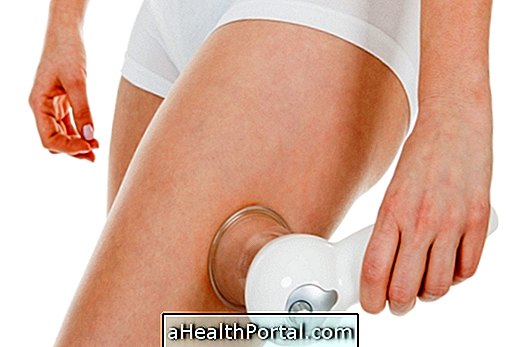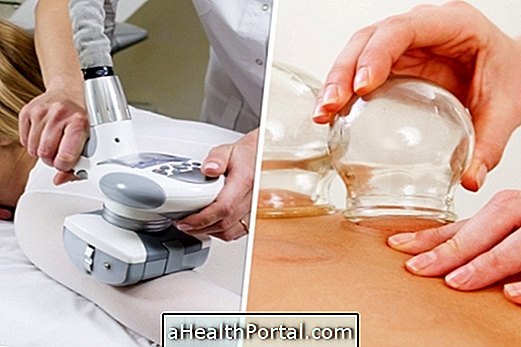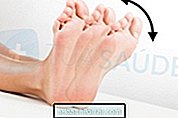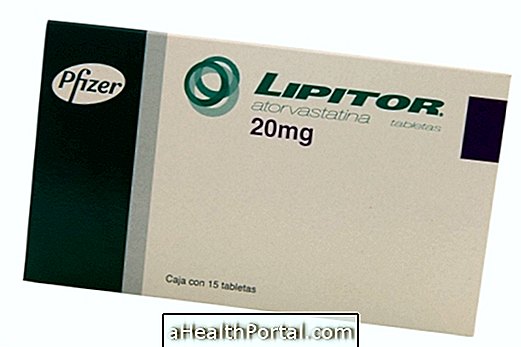The cracking of the feet occurs when the skin is very dry, and so it breaks down with body weight and the small pressures of day-to-day activities such as running to the bus or climbing stairs, for example.
Thus, the best way to prevent cracked skin from cracking on the heels is to keep your feet well moisturized by passing cream at least once a day.
However, for those who already have dry and cracked feet, there is a ritual of care that leaves the skin again silky and soft, allowing you to wear sandals and slippers without shame.
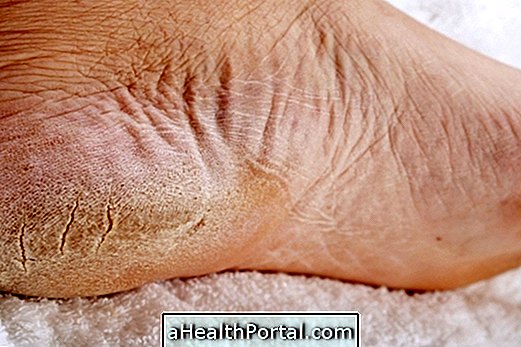
Home Treatment Ritual
This treatment ritual for cracked feet should be done at least 2 times a week or every day, during periods when the feet are very dry.
1. Make a moisturizing feet scalp
The first step is to do a scalding feet, to soften the skin and open the pores, allowing the moisturizer to be well absorbed by all layers of skin.
To do the scaling feet you should:
- Put some warm water inside a basin until it reaches a height of 8 to 10 cm, or a height that allows to immerse the whole foot in the water;
- Add 1 to 2 tablespoons of moisturizing cream, depending on the amount of water;
- Mix the cream well in the water, to dissolve completely;
- Dip the feet for 5 to 10 minutes, to ensure that the skin stays soft and absorbs the cream.
Ideally, scaling feet should not be done with very hot water, or without the moisturizing cream, as it will open and attack the pores and may leave the skin drier.
2. Dry the feet correctly
After finishing the feet scald it is very important to dry the skin well, to avoid the growth of fungi, especially between the toes. However, you should avoid rubbing the towel on the skin, as this action leaves the skin more irritated and contributes to increased dryness.
So the ideal is to dry the skin with light pressure movements on the skin, to remove excess water, and then leave the feet outdoors for 2 minutes, to dry completely.
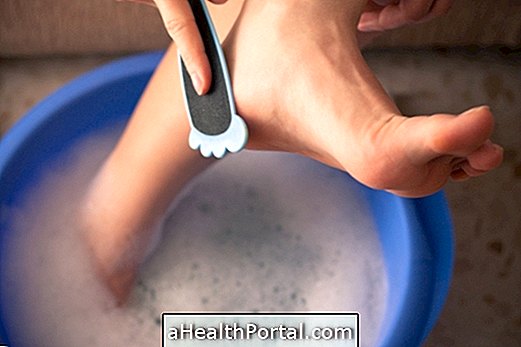
3. Remove excess skin with sandpaper.
This ritual step is optional and usually should only be done when there are no cracks, but the skin is still thick and dry. In these cases, after drying the foot with the towel, but before letting them dry in the open air, a sandpaper or a pumice stone should be used, for example, to make slight movements on the heel and remove the excess of dead skin
This technique can also be done on other drier regions of the foot, such as the side of the big toe. Then the foot can be passed again by warm water, or remove the skin that has left, using a towel, for example.
4. Pour a moisturizing cream
When the foot is completely dry, a little moisturizer should be used to close the pores and finish the skin hydration. The thicker the cream, the greater the degree of hydration, but the choice can be made according to the preferences of each person.
In case you have a moisturizer of the most common, see a recipe to make it a super moisturizing cream and suitable for cracked feet.
After passing the cream, one should wear a sock to ensure that it is not removed by the footwear and that it is completely absorbed by the skin. In addition, the sock helps the foot not to slip, avoiding possible falls. A good option is to do the ritual before bed, so that you keep your socks for a few hours and without the pressure of the shoe.
Check out the following video how to make a great homemade moisturizer to save your foot:
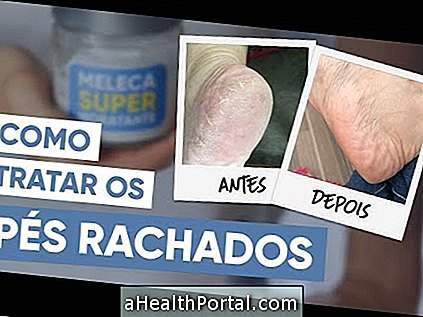
Main causes of cracked foot
The main cause of cracked foot is the lack of hydration, which leaves the skin less flexible and easier to break. However, there are some factors that contribute to the loss of hydration, such as:
- Walking long barefoot;
- Frequently wear sandals and slippers;
- Being overweight;
- Bathe in very hot water.
In addition, those who do not drink the amount of water they need during the day also have drier skin and are therefore more likely to get their feet dry. Here's how to calculate the amount of water you should drink per day to ensure a healthier body.
Those who have these risk factors should pass moisturizer at least once a day, after bathing or before bedtime, for example to ensure that the skin is well hydrated and that it does not risk breaking during the day- to-day.
